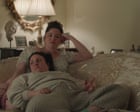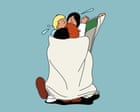John Calhoun designed an apartment complex for mice to examine the effects of overcrowding. It was hailed as a groundbreaking study of social breakdown, but is largely forgotten. So what happened?
Standing before the Royal Society of Medicine in London on 22 June 1972, the ecologist turned psychologist John Bumpass Calhoun, the director of the Laboratory of Brain Evolution and Behavior at the National Institute of Mental Health (NIMH) headquartered in Bethesda, Maryland, appeared a mild-mannered, smallish man, sporting a greying goatee. After what must surely have been one of the oddest opening remarks to the Royal Society in its storied 200-plus-year history – “I shall largely speak of mice,” Calhoun began, “but my thoughts are on man, on healing, on life and its evolution” – he spoke of a long-term experiment he was running on the effects of overcrowding and population crashes in mice.
Members of the Royal Society were scratching their heads as Calhoun told them of Universe 25, a giant experimental setup he had built and which he described as “a utopian environment constructed for mice”. Still, they listened carefully as he described that universe. They learned that to study the effects of overpopulation, Calhoun, in addition to being a scientist, needed to be a rodent city planner. For Universe 25, he had built a large, very intricate apartment block for mice. There were 16 identical apartment buildings arranged in a square with four buildings on each side. Calhoun told his audience each building had “four four-unit walk-up one-room apartments”, for a total of 256 units, each of which could comfortably accommodate about 15 mouse residents. There were also a series of dining halls in each apartment building, and a cluster of rooftop fountains so the residents could quench their thirst. Calhoun had marked each mouse resident with a unique colour combination and he or his team sat in a loft over this mouseopolis, for hours every day, for more than three years, and watched what unfolded.



















